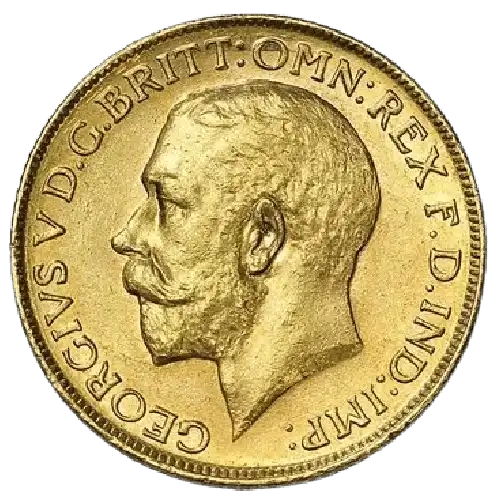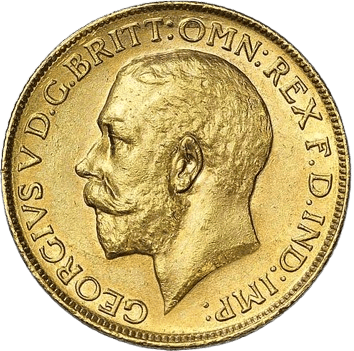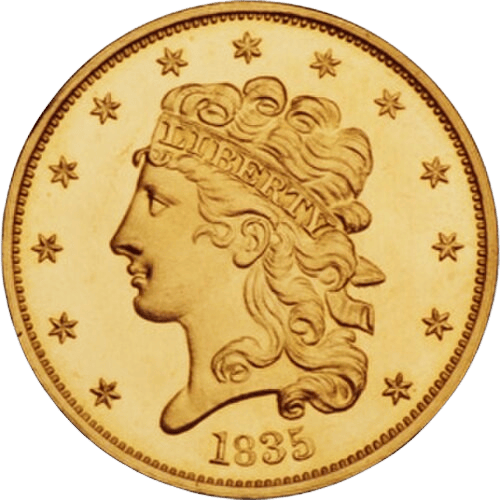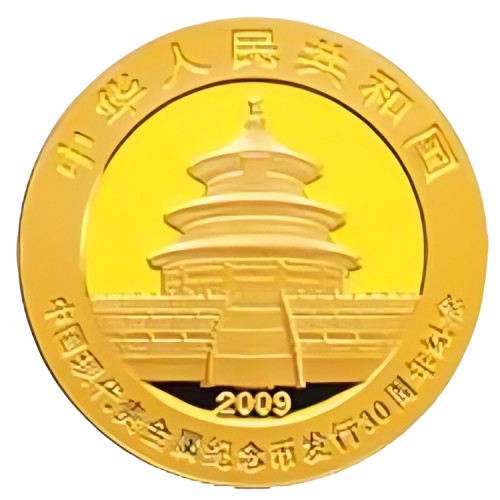British Sovereign

About British Sovereign

Obverse British Sovereign Coin
Design: Reigning British monarch (George V shown)
Reverse British Sovereign Coin
Design : Saint George and the Dragon
Designer : Benedetto Pistrucci
Design date : 1817

Coin Weights
NA
Specification
Value : 1 pound sterling
Mass : 7.98805 g
Diameter : 22.05 mm
Thickness : 1.52 mm
Edge : Milled (some not intended for circulation have plain edge)
Composition: .917 gold, .083 copper or other metals
Gold : .2354 troy oz
Years of minting : 1817–present
Mint marks : Various. Found on reverse on exergue between design and date for Saint George and the Dragon sovereigns, and under the wreath for shield back sovereigns.
Frequently Asked Questions
FAQs
There are three important reasons to consider American Gold Metals Inc. After acquiring your precious metals, we provide a follow-up service designed to keep you informed on economic and/or geopolitical events that could affect the gold or silver market. Keeping you informed in real time allows you to be proactive in your decisions.
Second: We are a member of NGC (Numismatic Guarantee Corporation), PCGS (Professional Coin Grading Service) and ANA (American Numismatic Association). We are also a company with decades of precious metals experience. We believe that integrity still matters and our record of service to our clients is a priceless commodity.
Finally by substantially reducing overhead costs, and running a more efficient, customer oriented business, we are able to provide the very best prices for precious metal products.
Setting up a precious metals IRA involves several steps:
1. Choose a custodian: Select a reputable custodian specializing in self-directed IRAs that handle precious metals.
2. Fund the account: Transfer or rollover funds from an existing IRA or 401(k).
3. Purchase metals: Work with a dealer to buy IRS-approved precious metals.
The coin was named after the English gold sovereign, last minted about 1603, and originated as part of the Great Recoinage of 1816. Many in Parliament believed a one-pound coin should be issued rather than the 21-shilling (£1.05) guinea struck until that time. The Master of the Mint, William Wellesley Pole, had Pistrucci design the new coin, and his depiction was also used for other gold coins. Originally, the coin was unpopular as the public preferred the convenience of banknotes, but paper currency of value £1 was soon limited by law. With that competition gone, the sovereign not only became a popular circulating coin, but was used in international trade and in foreign lands, trusted as a coin containing a known quantity of gold.
The British government promoted the use of the sovereign as an aid to international trade, and the Royal Mint took steps to see that lightweight gold coins were withdrawn from circulation. From the 1850s until 1932, the sovereign was also struck at colonial mints, initially in Australia, and later in Canada, South Africa and India—they have been struck again in India since 2013 (in addition to the production in Britain by the Royal Mint) for the local market. The sovereigns issued in Australia initially carried a unique local design, but by 1887, all new sovereigns bore Pistrucci’s George and Dragon design. Strikings there were so large that by 1900, about 40 per cent of the sovereigns in Britain had been minted in Australia.
With the start of the First World War in 1914, the sovereign vanished from circulation in Britain, replaced by paper money, and it did not return after the war, though issues at colonial mints continued until 1932. The coin was still used in the Middle East, and demand rose in the 1950s, which the Royal Mint eventually responded to by striking new sovereigns in 1957. It has been struck since then both as a bullion coin and, beginning in 1979, for collectors. Though the sovereign is no longer in circulation, it is still legal tender in the United Kingdom.






